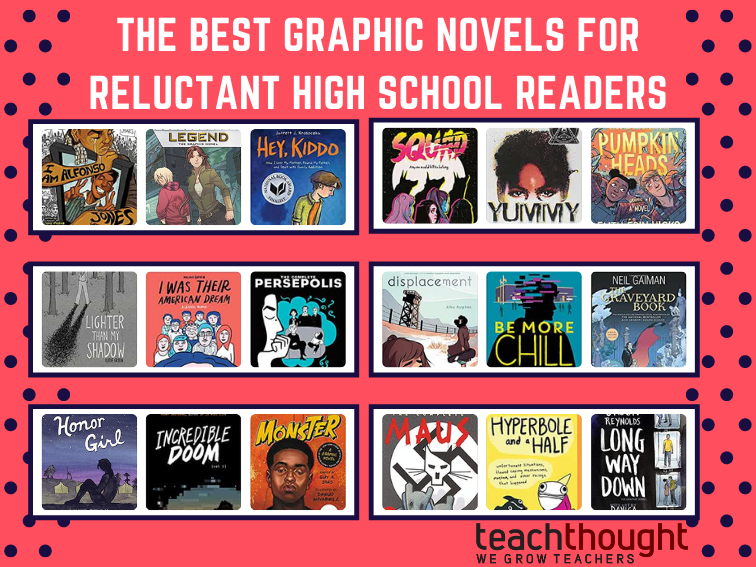
What Are The Best Graphic Novels For High School Readers?
Disclosure: This post contains affiliate links to products. As Amazon Associates, we may earn from qualifying purchases. However, we never recommend a product, service, etc., that we wouldn’t recommend in lieu of the very minor fee we may receive. To keep this from happening and make sure that Amazon receives all of the profit, simply search for the product directly on Amazon’s site without using the link. Or better yet, find it a small business, local bookstore, etc. Read more about our policy here.
Graphic novels take the text of a story and juxtapose it with corresponding imagery, usually in the form of a comic strip or sequential art.
As graphic novel authors have ventured outside of superhero narratives and improved at representing more diverse characters, graphic novel sales have soared. This infographic below from Comichron shows just how successful graphic novel sales have been in the past several years:

What’s fueling the recent rise in graphic novel popularity? Other than greater representation, many educators are finding that graphic novels are useful resources for struggling readers or students who profess that they do not enjoy reading. Why might that be?
See also The 10 Most Educated Countries In The World
- They can help students develop empathy by using visual images to show shared experiences and traits.
- They can help students develop visual literacy, which involves understanding plot, characters’ motivations, and making inferences.
- Then can provide multimodal reading experiences for English Language Learners and reluctant readers.
- They force the reader to interact with the text by figuring out the relationship between the text and the images.
Interested in trying out a graphic novel? We’ve compiled 28 of the best graphic novels for reluctant high school readers, but really, for any reader. Many of these graphic novels are novels that were previously published and then retold in graphic form, so it may be neat to read the graphic novel format before the traditional novel format, or vice versa, and contrast the two.
Let us know which graphic novels are your favorite and which we may have mistakenly left off this list!
What are the Best Graphic Novels for Reluctant High School Readers?
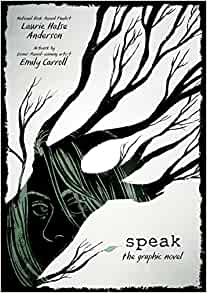
Speak: The Graphic Novel by Laurie Halse Anderson and Emily Carroll
Melinda is having a difficult start to her first year in high school. Notorious for busting an end-of-summer party (where she was sexually assaulted by an older male student). Readers watch Melinda go through the motions as she uses art to speak her truth.
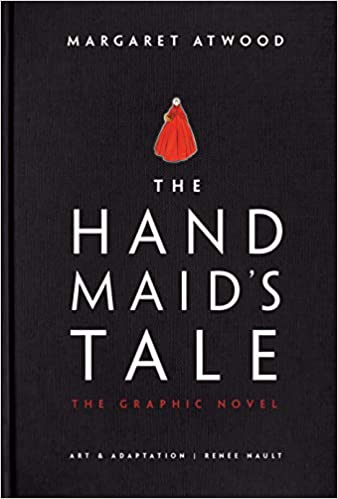
The Handmaid’s Tale: The Graphic Novel by Margaret Atwood and Renee Nault
As a handmaid in Gilead, Offred and her fellow women cannot hold jobs, read, or make friends. Handmaids are valued for their fertility, and each month, Offred must lie on her back while the Commander attempts to impregnate her.
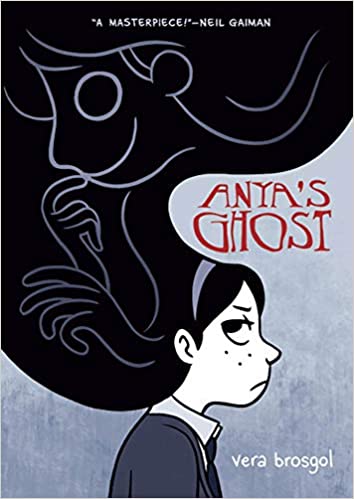
Anya’s Ghost by Vera Brosgol
Anya is embarrassed by her family, self-conscious about her body, and not fitting in at school. If that’s not tough enough, Anya falls down a well, meets a ghost, and becomes best friends with them.
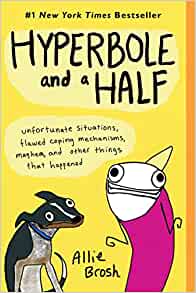
Hyperbole and a Half by Allie Brosh
In this delightful and hilarious graphic novel, the author takes a self-deprecating look back at anxiety in her life.
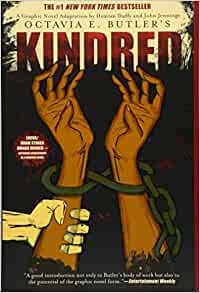
Kindred: A Graphic Novel Adaptation by Damian Duffy and Octavia Butler
Taking place in the 20th century antebellum South, Kindred tells (and visualizes) the story of Dana, a young black woman who travels back in time from her 1970s California home to the pre-Civil War South, where she becomes embroiled in a conflict with a slaveholder and ancestors enslaved by the slaveholder.
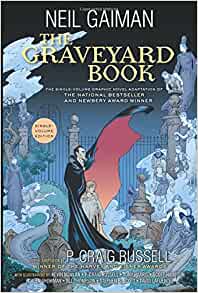
The Graveyard Book by Neil Gaiman and P. Craig Russell
Nobody Owens (aka Bod) is the protagonist in this graphic novel about a boy growing up in a graveyard, being educated by ghosts, and navigating the boundary of the world of the living and the world of the dead.
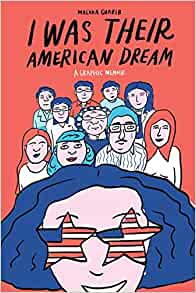
I Was Their American Dream: A Graphic Memoir by Malaka Gharib
Malaka Gharib narrates the tale of her teenage years as the daughter of Filipino and Egyptian immigrants navigating an all-American culture.
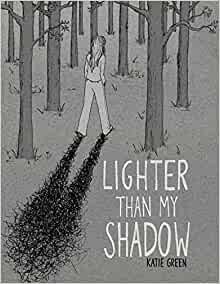
Lighter Than My Shadow by Katie Green
Katie Green’s graphic novel illustrates her experience struggling with and recovering from an eating disorder.
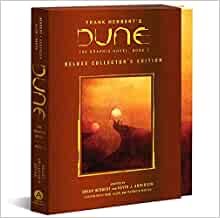
Dune: The Graphic Novels by Brian Herbert, Kevin Anderson, Frank Herbert, and Raul Allen
Paul Atreides’ family has just accepted control of the planet Arrakis, where spice is abundant but terror awaits. Dune weaves a tale of colonialism, capitalism, environmentalism, and politics.
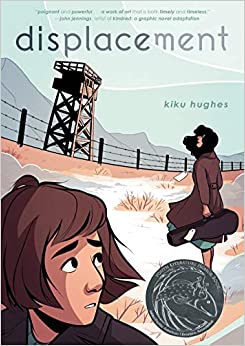
Displacement by Kiku Hughes
Similar to Octavia Butler’s protagonist in Kindred, Kiku finds herself transported from her vacation in San Francisco to the 1940s Japanese-American internment camp that housed her deceased grandmother, Ernestina.
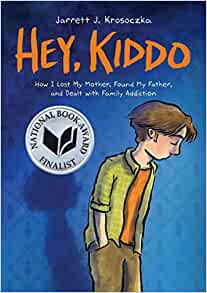
Hey Kiddo: How I Lost My Mother, Found My Father, and Dealt with Family Addiction by Jarrett J. Krosoczka
Jarrett’s mom is addicted to drugs, his father is MIA, and his grandparents are loud and opinionated (but loving). They support Jarrett as he attempts to make sense of his abnormal life, reconcile with his mother, and find his father.
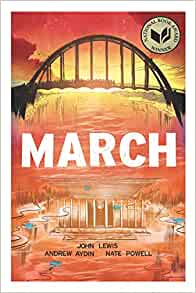
March Trilogy by John Lewis, Andrew Aydin, L. Fury, and Nate Powell
Congressman John Lewis recalls experiences from his time i the Civil Rights Movement.
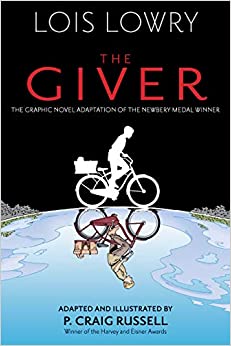
The Giver by Lois Lowry and P. Craig Russell
In Jonah’s society, there is no pain, no war, no hatred, no prejudice, and no individuality. Jonah is awaiting the Ceremony of Twelve, where he will receive his Assignment as a new adult member of the community. When he is named as Receiver of Memory, he meets the Giver, who transfers memories to Jonah by placing his hands on his back.
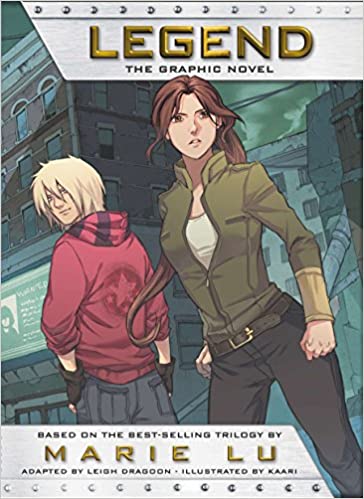
Legend: The Graphic Novel by Marie Lu
June is a military prodigy from one of the Republic’s most elite families. Day is a poor teenage boy identified as the suspect who murdered June’s brother. The two come to uncover secrets about how they are linked.
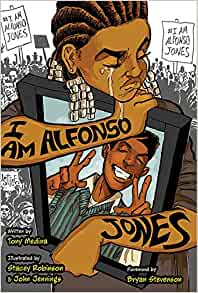
I Am Alfonso Jones by Tony Medina, John Jennings, and Stacey Robinson
As Alfonso Jones is preparing to play Hamlet in his school play, he is shot by an off-duty police officer. Alfonso wakes up, but as a ghost who is new to the spiritual world. This is the first graphic novel for YA readers to hone in on police brutality and the Black Lives Matter movement.
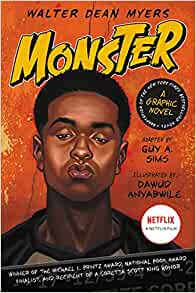
Monster: A Graphic Novel by Walter Dean Myers, Guy A. Sims, and Dawud Anyabwile
Steve Harmon is a teenage boy awaiting trial for murder and robbery charges. Monster narrates the story of Steve’s thoughts and feelings while in juvenile detention.
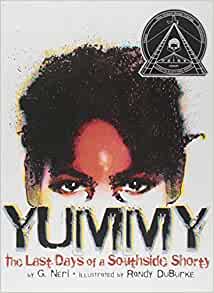
Yummy: The Last Days of a Southside Shorty by G. Neri and Randy Duburke
Yummy is a young kid from Chicago who is killed by his own gang. Yummy (the graphic novel) explores gang lifestyle and prompts readers to reconsider what they believe to be right and wrong.
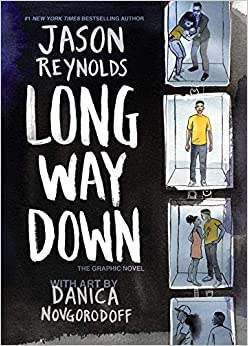
Long Way Down by Jason Reynolds and Danica Novogorodoff
After Will’s older brother, Shawn, is shot nd killed, Will decides to take revenge. Told over the span of a single elevator ride, Long Way Down shows how violence is a cycle and revenge may not be worth it.
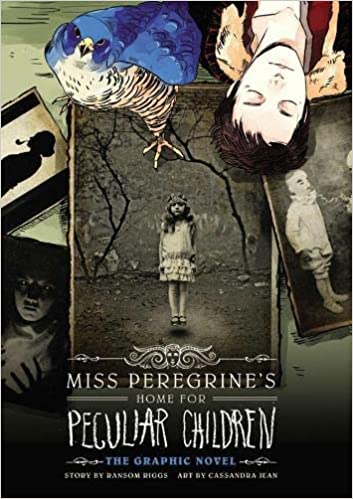
Miss Peregrine’s Home for Peculiar Children: The Graphic Novel by Ransom Riggs and Cassandra Jean
At Miss Peregrine’s, all of the children are peculiar…they look peculiar and have peculiar abilities, according to Jacob Portman’s grandfather’s stories. When Jacob’s grandfather dies, Jacob sets off to determine the truth about his grandfather’s tales.
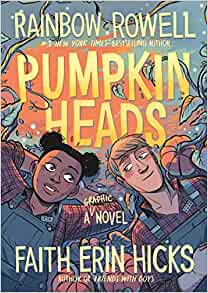
Pumpkinheads by Rainbow Rowell, Faith Erin Hicks, and Sarah Stern
Deja and Josiah work together at the seasonal pumpkin patch, then don’t see each other for the remainder of the year. In their senior year, it is their last season together. They decide to turn it into a thrilling adventure.
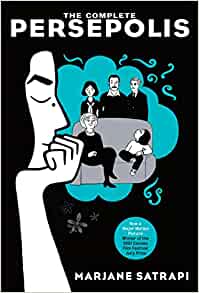
The Complete Persepolis by Marjane Satrapi
In Persepolis, Marjane Satrapi tells the heartbreaking story of her coming-of-age in Tehran during the Islamic Revolution, her high school years spent in Vienna, and her self-imposed exile from Iran.
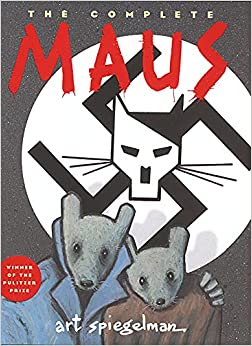
The Complete Maus by Art Spiegelman
The story of Vladek Spiegelman’s experience as a Jewish survivor of the Holocaust, who narrates his story to his son, Maus uses cats as Nazis and mice as Jews to bring readers close to the ugliness of genocide and prejudice.
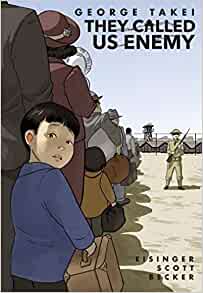
They Called Us Enemy by George Takei, Justin Elsinger, Steven Scott, and Harmony Becker
Before George Takei acted on Star Trek, he survived years of living in a ‘relocation center’ (ordered by President Franklin D. Roosevelt as a response to war with Japan). This graphic novel is Takei’s account of those harrowing years wtih his family.
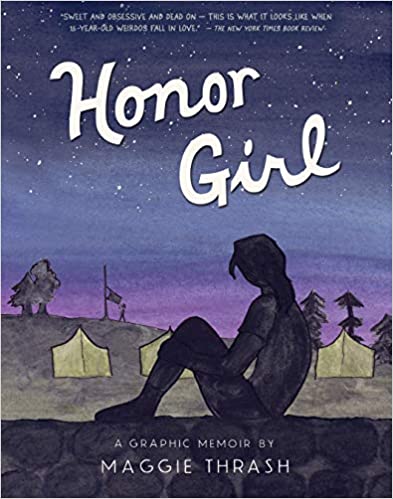
Honor Girl: A Graphic Memoir by Maggie Thrash
Honor Girl is the story of author Maggie Thrash’s experience as a summer camper navigating feelings toward an older, female camp counselor.
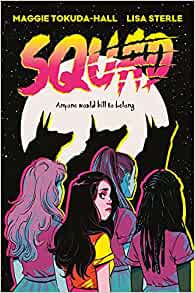
Squad by Maggie Tokuda-Hall and Lisa Sterle
Becca is the new girl invited into a clique by the high school’s most popular girls. When she learns that they are werewolves who ‘prey’ on boys who take advantage of girls, she wants to become a werewolf, too. Of course, things get a bit complicated when Becca develops feelings for one of her new werewolf best friends.
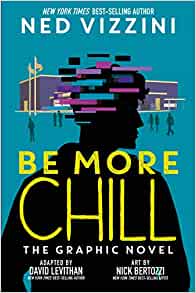
Be More Chill by Ned Vizzini, David Levithan, and Nick Bertozzi
Nerdy Jeremy Heere is infatuated with gorgeous Christine, who is way out of his league. Enter the ‘squip’ — a pill-sized swallow-able computer guaranteed to bring its consumer what they most desire in their life. Naturally, after a series of ‘nerd makeover’ events, consuming the squip starts to have some disastrous consequences.
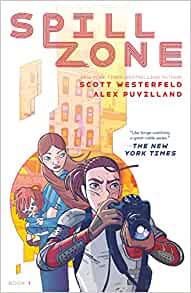
Spill Zone by Scott Westerfeld and Alex Puvilland
Poughkeepsie was destroyed by a deadly spill, which claimed the lives of Addison’s parents and left her younger sister mute. Addison approaches the Spill to take exceptional photographs that she later sells. When a million-dollar offer is extended, Addison ventures closer to the Spill Zone than she has ever attempted.
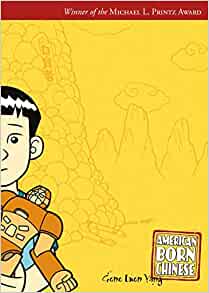
American Born Chinese by Gene Luen Yang
Three different characters’ stories come together in this whimsical, hilarious graphic novel: Jin Wang (a Chinese-American new kid), the Monkey King, and Chin-Kee (a negative Chinese stereotype, personified).
